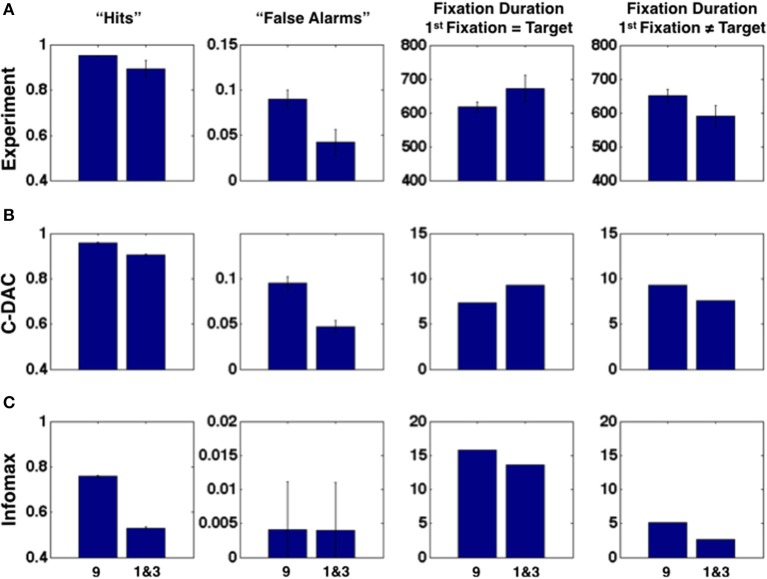Figure 3.
The influence of prior spatial knowledge on sensory processing and decision-making, in humans and models. (A) In terms of perceptual choice, subjects are more likely to choose the most probable target location (“9”) than the less probable locations (“1 and 3”) as containing the target, whether it actually contains the target (“hits,” first column) or not (“false alarms,” second column). In terms of fixation duration (milliseconds), subjects are faster to accept the most probable location, compared to the less probable locations, as containing the target, when the fixated location contains the target (third column); they are slower to accept the most probable location, as compared to the less probable locations, as not containing the target, when the fixated location does not contain the target (fourth column). All data included in the plots are from trials where the subject first fixated the labeled location. The data for the “1” and “3” locations are combined due to the relatively low incidence of subjects' first fixating these locations. (B) C-DAC reproduces the same pattern of behavior as human subjects. Fixation duration in number of simulation steps. (C) Infomax fails to reproduce the same pattern of behavior as human subjects. Simulation settings: (c, cs, β) = (0.005, 0.1, 0.68).

